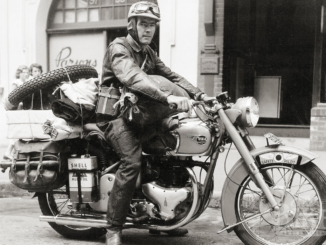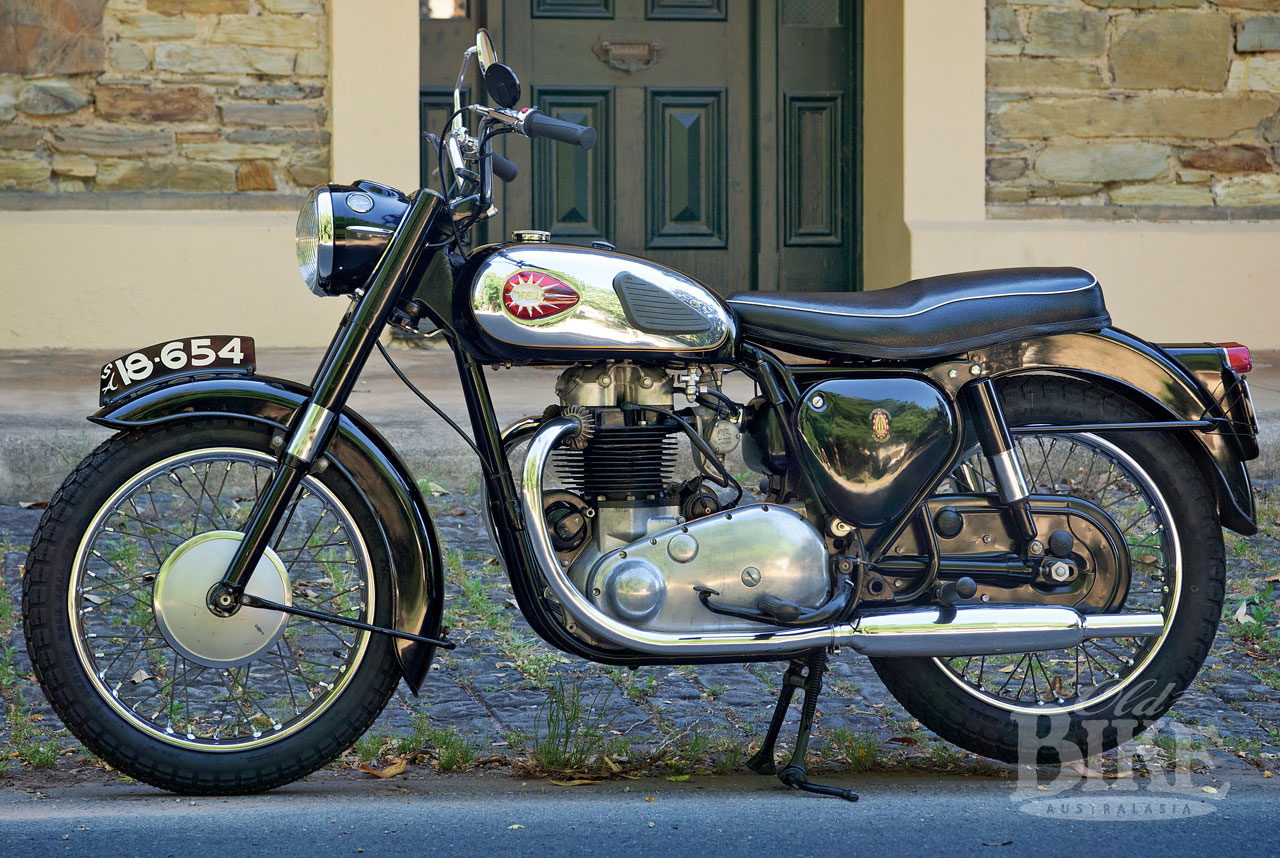
From our Old Bike Archives – Issue 99 – first published in 2022.
Story: Jim Scaysbrook • Photos: Russ Murray, Marco Moretti, OBA archives.
Some motorcycles have a hard life, thrashed mercilessly and/or with scant maintenance. Others lead a less punishing existence. This one has been sleeping for 48 years.
When our featured 1961 BSA Golden Flash was wheeled into the garage in 1973, it could not have known that this was to be its final movement for almost half a century. The quiet slumber in the benign Adelaide climate, gathering a coat of dust, preserved the big British twin perfectly – its odometer sitting, seemingly trapped in time – at 3,821 miles.
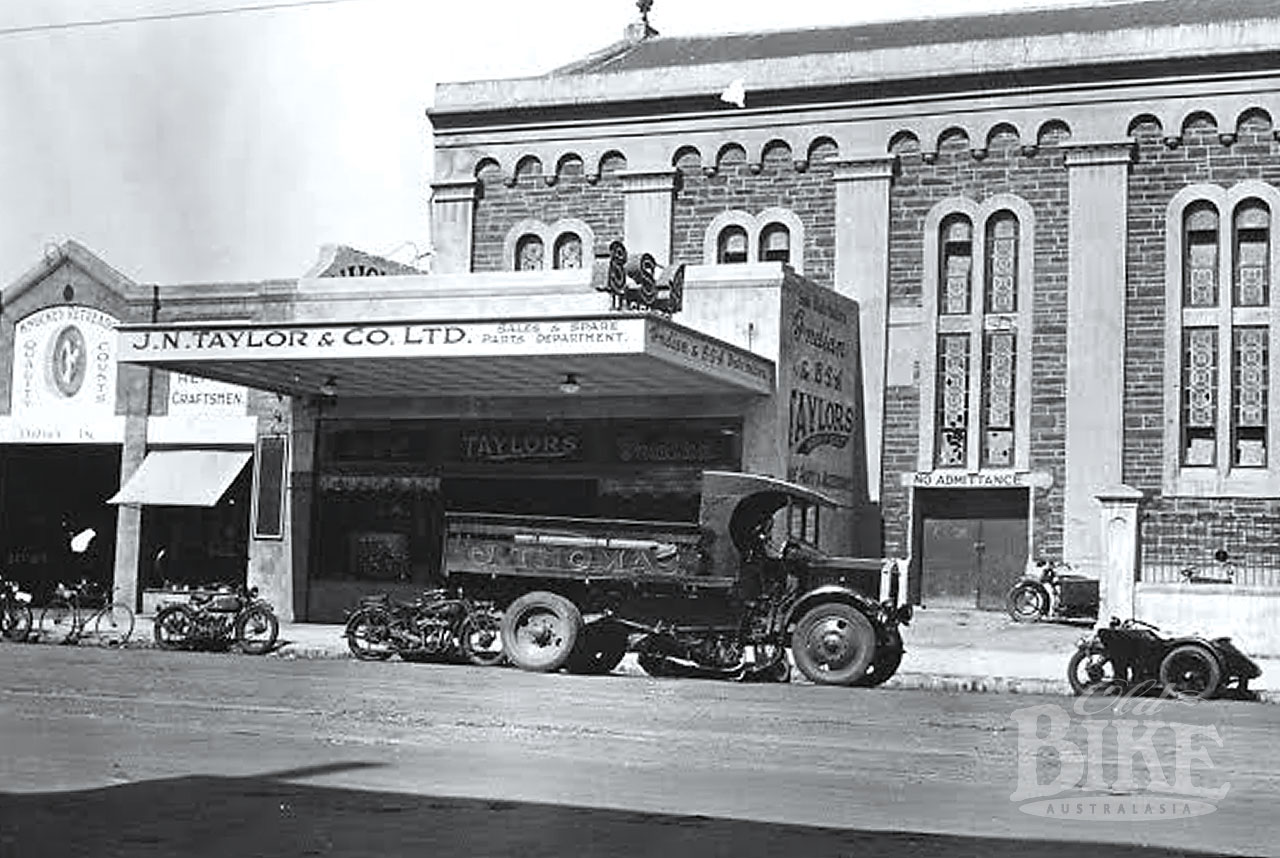
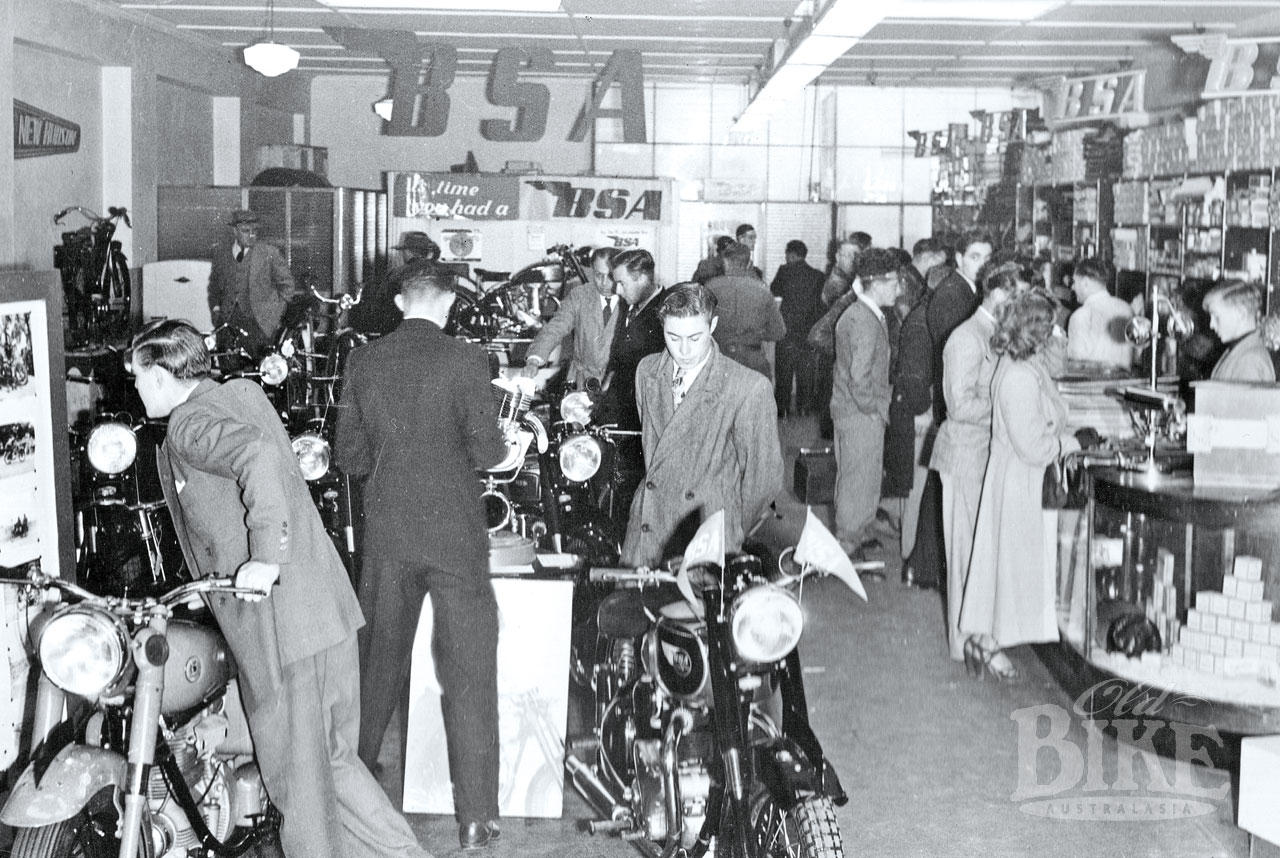
Harold Wigzell forked out a wad of his hard-earned cash in February 1962 to purchase the Golden Flash from BSA distributor J.N. Taylor’s at 150 Grenfell Street, Adelaide. Its final South Australian registration – 18.654, hand-painted as was the custom in those days – expired on 23rd February 1973. It is now owned by Marco Moretti, who takes up the story. “My father has known Judith (Harold Wigzell’s widow) through his car club for over 20 years and was offered to buy her 1970 Mk 2 Cortina that she had owned since new and was no longer able to drive. When going to have a look at the car in January 2021 we discovered the bike sitting under a cover in her garage; it had not moved from there in 48 years. Having a huge passion for old motorbikes, owning a 1973 Laverda 750 SF, 1973 Honda 750-4 a 1973 Triumph Tiger 750, two 1976 Yamaha RD400s and a 1979 RD Daytona 250F, I was in my element, and after a long discussion with Judith she was happy to sell me the bike as she knew I would bring it back to life as she wanted.
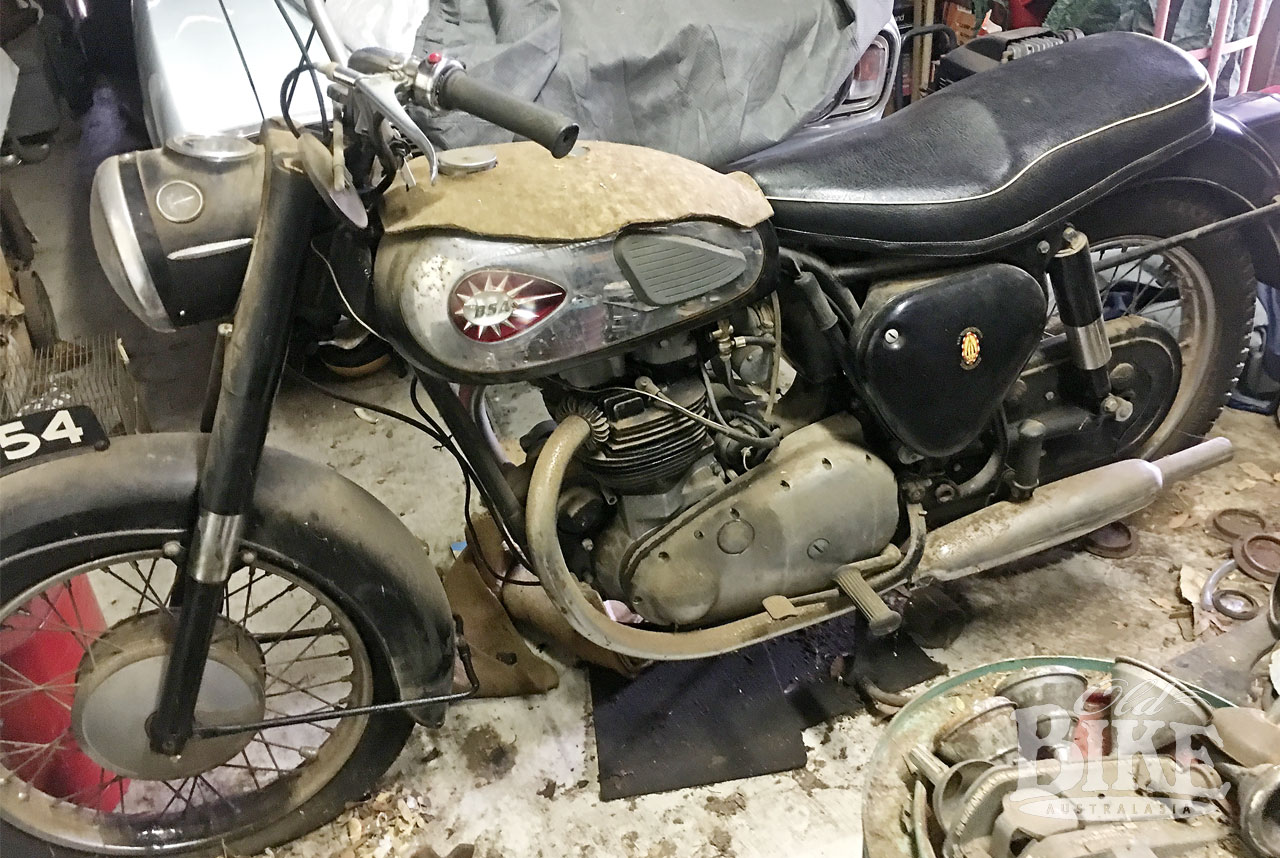
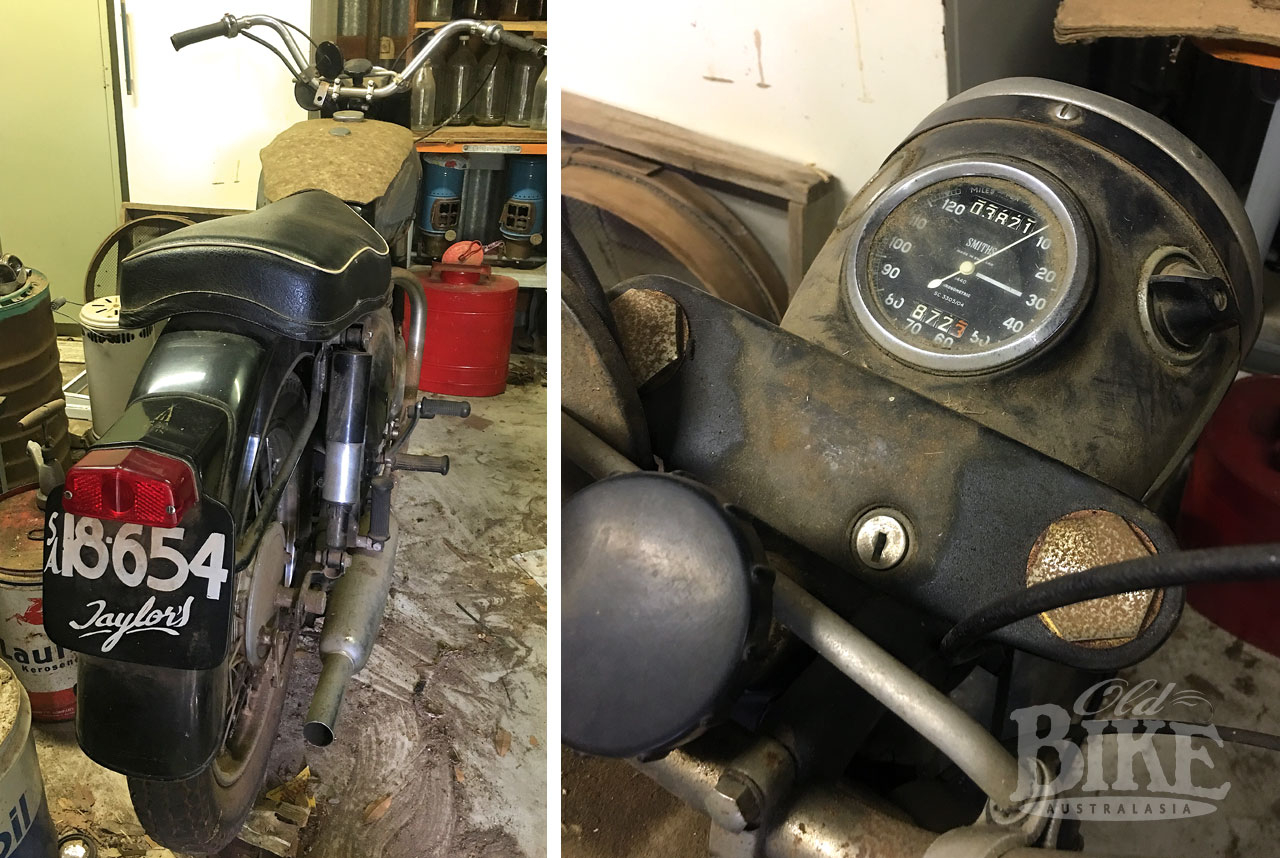
“After hours of cleaning with 0000 grade steel wool and Purple Metal Polish to detail the bike it came up incredible. I contacted Dave Robertson who specialises in BSA-only repairs here in Adelaide, and he was able to work his magic to get the bike going after so long, but also preserve all its originality. A pair of new Dunlop K70 tyres, spark plugs, oil change, new battery, and some clutch repairs later, the bike started first kick.
My first ride was on the 23rd May, 2021 when I participated in the Distinguished Gentleman’s Ride for Men’s Health, something I am very passionate about. 424 registered riders in Adelaide raised $54,735. We left from Midwest Trader in Ebenezer Place Adelaide and rode to Port Adelaide lighthouse, then back to the main and the Magpie Hotel for lunch. The BSA rode like a dream, and it is an absolute dream being the new owner. To me it was a once in a lifetime find.”
The Golden Flash story
In may seem an anomaly to have a model called the Golden Flash which is in fact all-black (plus chrome, and well, it does have gold striping on the fuel tank) but that’s what BSA did when the new A10 model was introduced in 1950. Admittedly, the gold version was the scene-stealer, but there was an option, which many, including police forces around the world, took up. Initially, the entire production of the gold-finished models was exported, with the British market receiving only the black version.
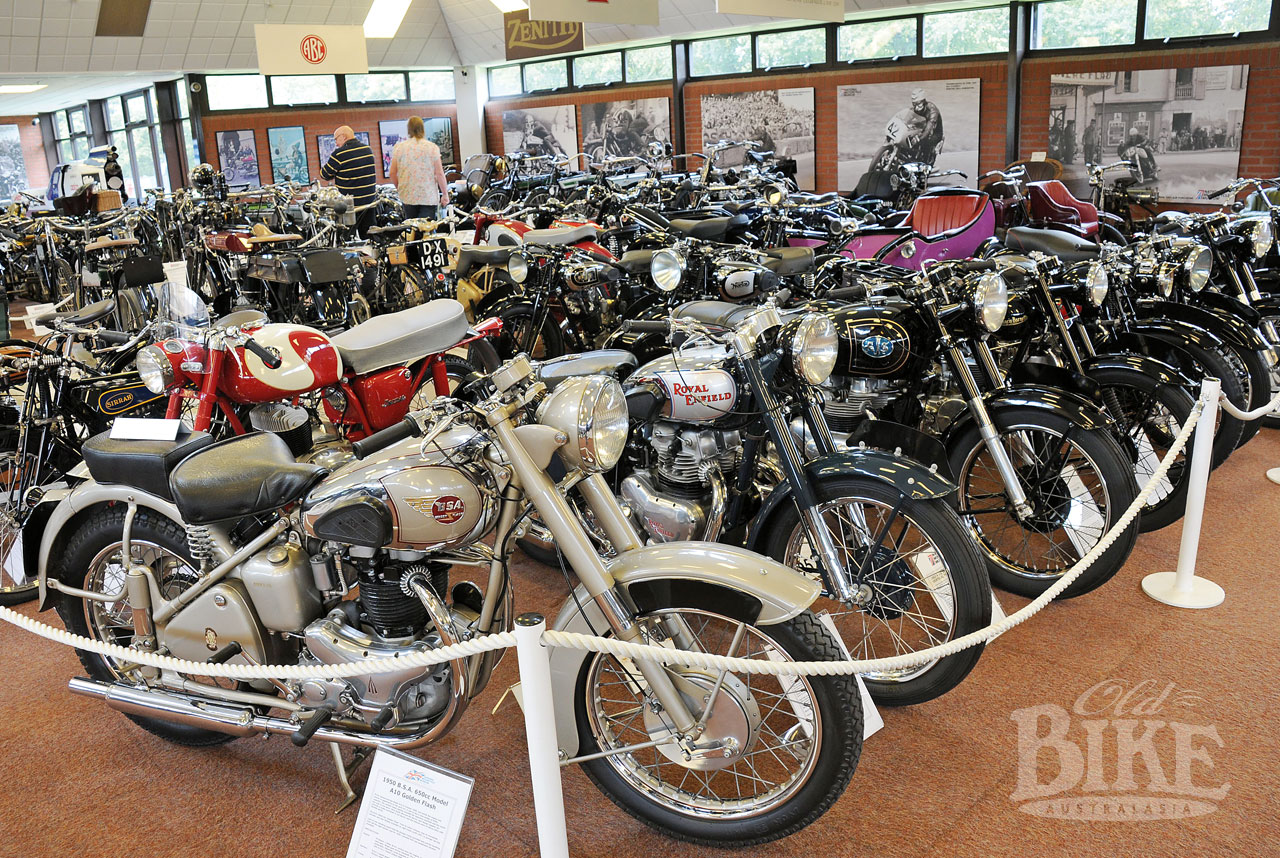
The A10 Golden Flash was not, as is often thought, a beefed up version of the earlier 500cc A7, but a completely new design that incorporated many of the original features. It was designed by Bert Hopwood, who had re-joined BSA after a brief stint with Norton and the whole project was completed in record time. As Hopwood said in his book Whatever happened to the British Motorcycle Industry, “The production capabilities of the company (BSA) was phenomenal as instanced by the firm deadline fixed for the new 650cc twin cylinder Golden Flash model. We were to have three prototypes available for testing by August 1949, and the new motorcycle would be shown at Earls Court in October of that year, with initial production quantities available in November. I had joined the company in May 1949 and had completed the design plans by the middle of June. The BSA company went on to produce a product on time, which was to prove one of the most reliable and profitable best sellers of that era.” The success of the new model was deemed critical to the company’s future, particularly in oversees markets, a sentiment echoed by Triumph, which had stretched the 500cc 5T Speed Twin to 650cc almost simultaneously and released it to a blaze of publicity at the Montlhèry track near Paris in September 1949.
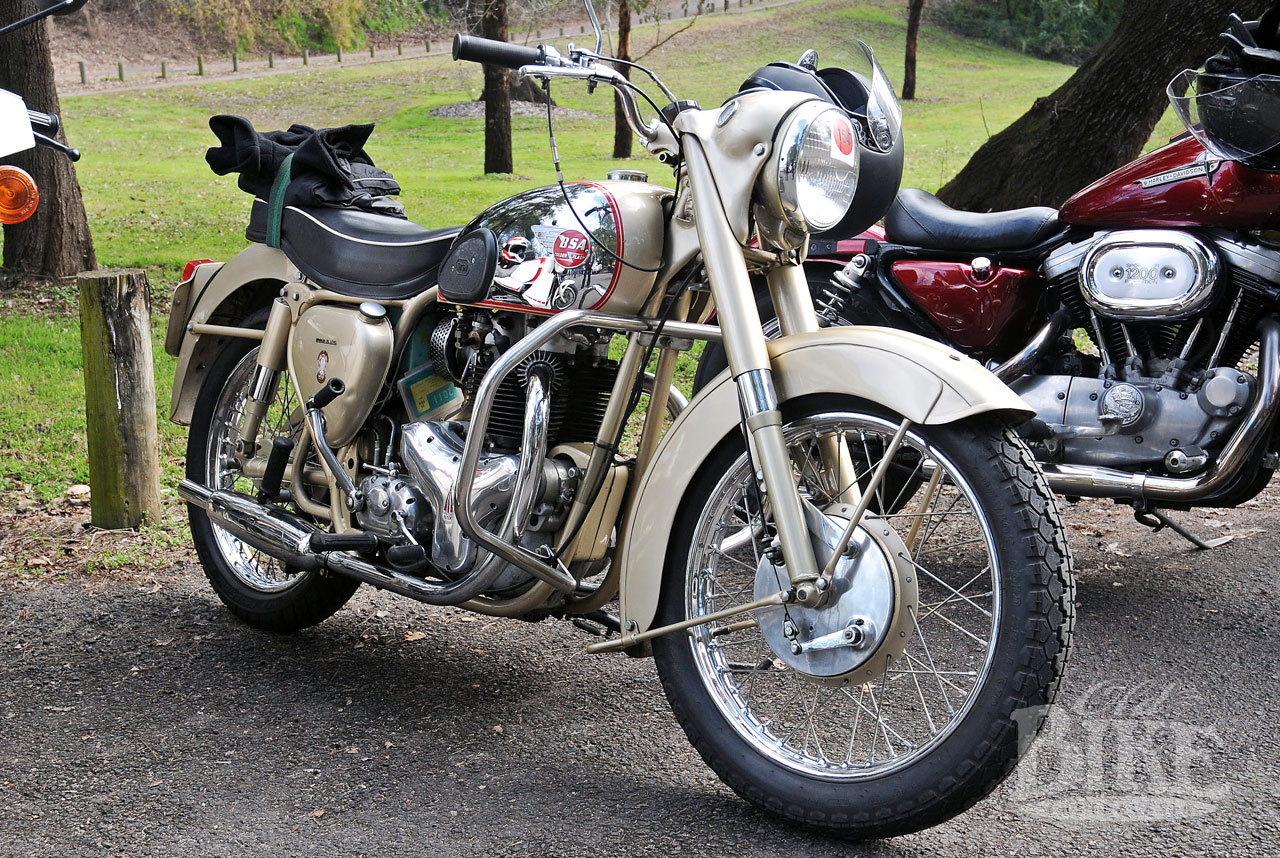
The A10 was indeed one of the stars of the show at Earls Court in 1949 (the other being the 650cc Triumph 6T Thunderbird), although as one leading journal of the day commented, “Export consideration may also be said to have been responsible for one of the most striking features of the 1949 Show, the introduction of two 650 vertical twins. What, it may be asked, was the point of adding 150cc to machines already capable of the most magnificent performance?” The buying public certainly did not question the logic, and orders flooded in from BSA dealers.
In order to meet the production schedule for 1950, normal processes were streamlined, as Bert Hopwood recalled. “We had three experimental prototypes under road test and because many more miles per machine were needed than a single rider could possibly achieve, a twenty-four hour round the clock operation was set up, with three riders per machine having an eight hour shift of duty. By operating this way, with nine riders, we could achieve an average of around 4,000 miles per week with each machine. The machines were surprisingly free from trouble with the exception of a tendency for the offside piston to run dry and seize. From a Perspex window bolted to the top of the open crankcase, we were able to observe a gross inadequacy of lubricant on the offside of the engine, which was very easy to correct. Our problem faded overnight.”

Very few parts from the early A7 would fit the new design. In fact, a new version of the A7 followed with reduced dimensions of the A10 bore and stroke. The A10 used a bore and stroke of 70mm x 84mm to give a displacement of 646cc, while the new version of the A7, first seen in 1951 had a 66mm bore with a 72.6 stroke for 497cc. Unlike the original A7, both new motors had an iron cylinder head with the induction manifold (which had a slight downdraft angle) as part of the casting. The rocker box was in aluminium with two valve covers. There were also detail changes to the gearbox to improve the operation. Both rigid and plunger frames were retained with the cycle parts virtually unchanged until 1951 when the rigid was dropped and the plunger frame became standard. To many, this was a retrograde move, as the un-damped plunger rear end was said to produce less precise handling through corners. Nevertheless, the A10 was certainly a spirited performer and well suited to hauling a sidecar, although with the extra weight, the braking capabilities were marginal. For some reason known only to BSA, the A10 was listed for 1951 (in the UK) at £193/0/10, while the 500cc A7’s price was higher at £208/5/8.
In 1953 the hungry US market received the A10 Super Flash, with high compression pistons, a sports camshaft and a single Amal TT carburettor to take power output to 42hp and giving the machine a top speed of 110mph. At this time, the US market’s potential was emerging following the successful 1950 British Car and Motorcycle Exhibition in New York, but Australia was still by far the best customer for the home country’s vehicles. But the US ‘bigger must be better’ mantra prevailed, and thus the extra 150cc of the BSA twin was seen as a marketing imperative.
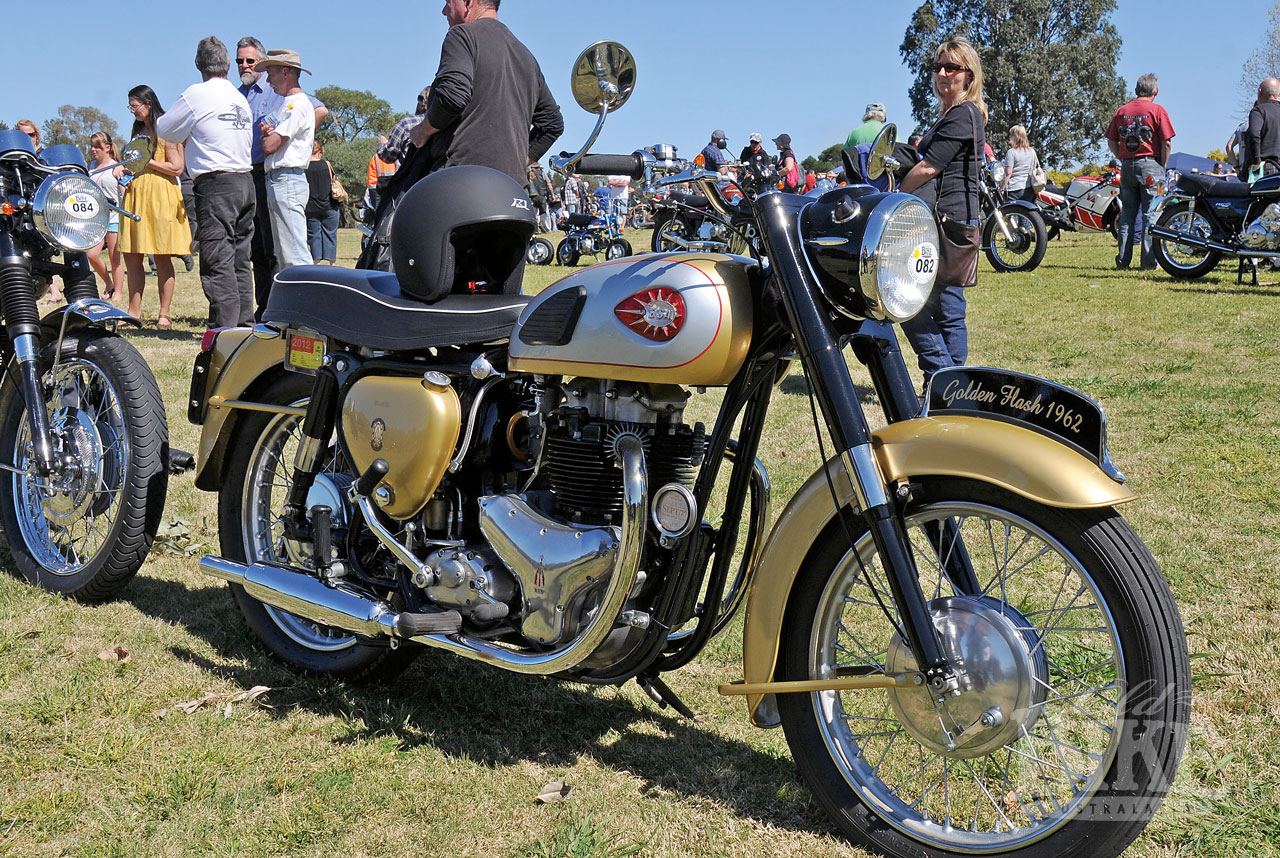
The big breakthrough in the evolution of the models was the introduction, in 1954, of the BSA swinging arm frame, although this was initially only available on the top-line Road Rocket version of the 650 twin. This was a well thought out all-welded design that stood BSA in good stead for many years to come. Inevitably compared to the Norton Featherbed frame, BSA’s was heavier but similar in concept, although the all-up weight of the A10 Golden Flash was stated as 414lb (188kg) for both plunger and swinging arm models. The new chassis was gradually applied across the range, including on the sporty Gold Star singles (with a kink in the bottom right frame rail to clear the oil pump), quickly earning a reputation for fine handling on both tar and dirt. The 1956 models incorporated a quickly-detachable rear wheel with a full width hub (to match the front, introduced the previous year) and cable-operated rear brake.
The basic A10 Golden Flash continued through the 1950s with only detail changes, the swinging arm frame finally becoming standard fitment as late as 1958. Cycle parts like fuel and oil tanks, toolbox, and mudguards remained virtually unchanged throughout the A10 model’s life. That life continued into the 1960s but there was change on the horizon. 1962 was only a few days old when BSA announced a brand new brace of 500cc and 650cc twins – the A50 and A65. These unit construction engines still used the traditional 360-degree crankshaft, but with the gearbox housing cast integrally with the crankcases, with primary drive by triplex chain. The common dimension of the new engine was the stroke – 74mm. On the 500, a bore of 65.5mm produced a capacity of 499cc, while the 650 used a 75mm bore. Both had a compression ratio of 7.5:1. In parallel with the new A50/A65, the venerable A10 engine continued in production during 1963, albeit only in Super Rocket and Rocket Gold Star guise.
Born again
Being a 1961 model, the featured A10 Golden Flash varied little from its predecessors, apart from the use of an Amal Monobloc carburettor to replace the old separate bowl Amal Type 6. It is also fitted with the US-style high and wide handlebars. During his very sympathetic refurbishment, Marco Moretti took the trouble to fit Dunlop K70 tyres, which are correct for the period and look the part. He also went through an extensive process to endeavour to have the original registration number – SA 18.654 – re-issued, but had to eventually admit defeat and accept a modern registration number and plate. That number had actually been re-issued to the owner of a vintage car, which has now not been registered for eleven years, so Marco hasn’t entirely given up on claiming it.
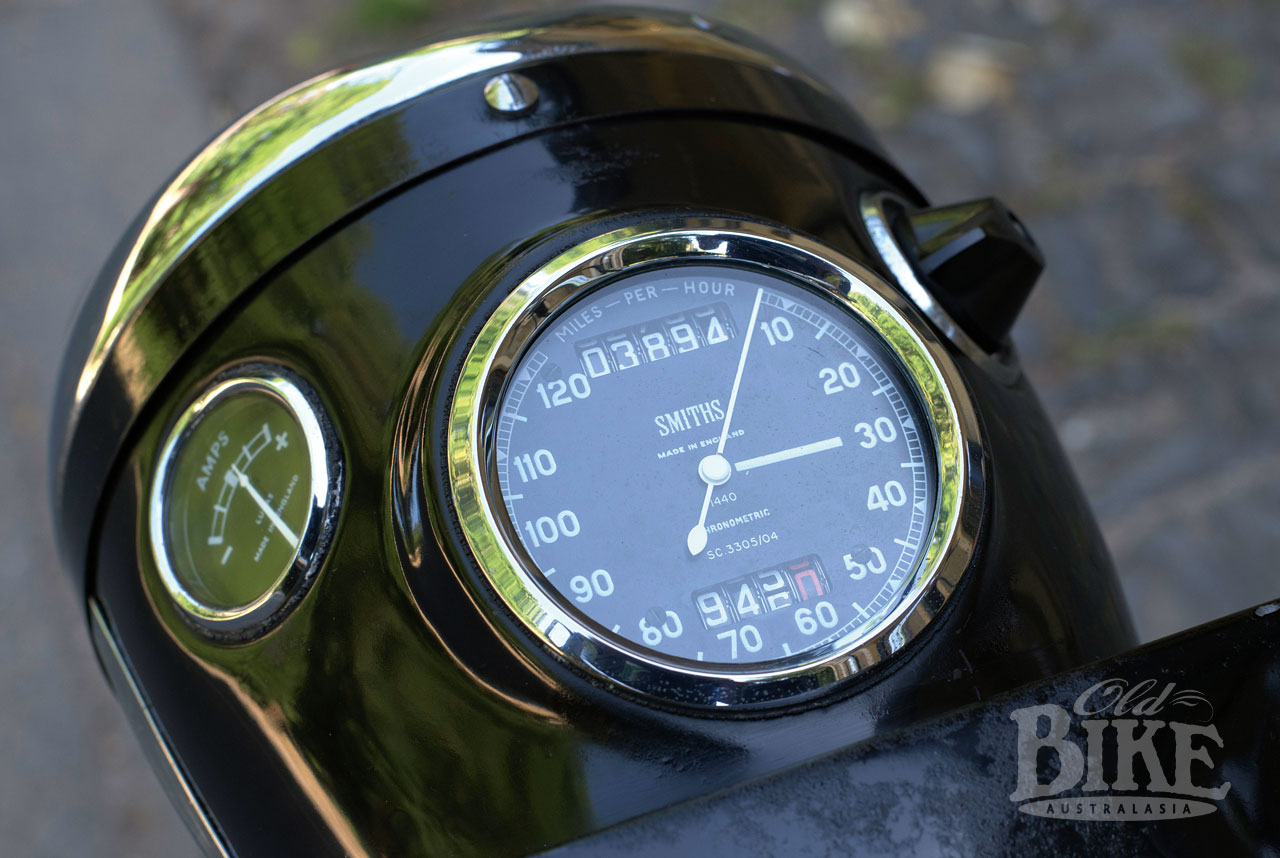
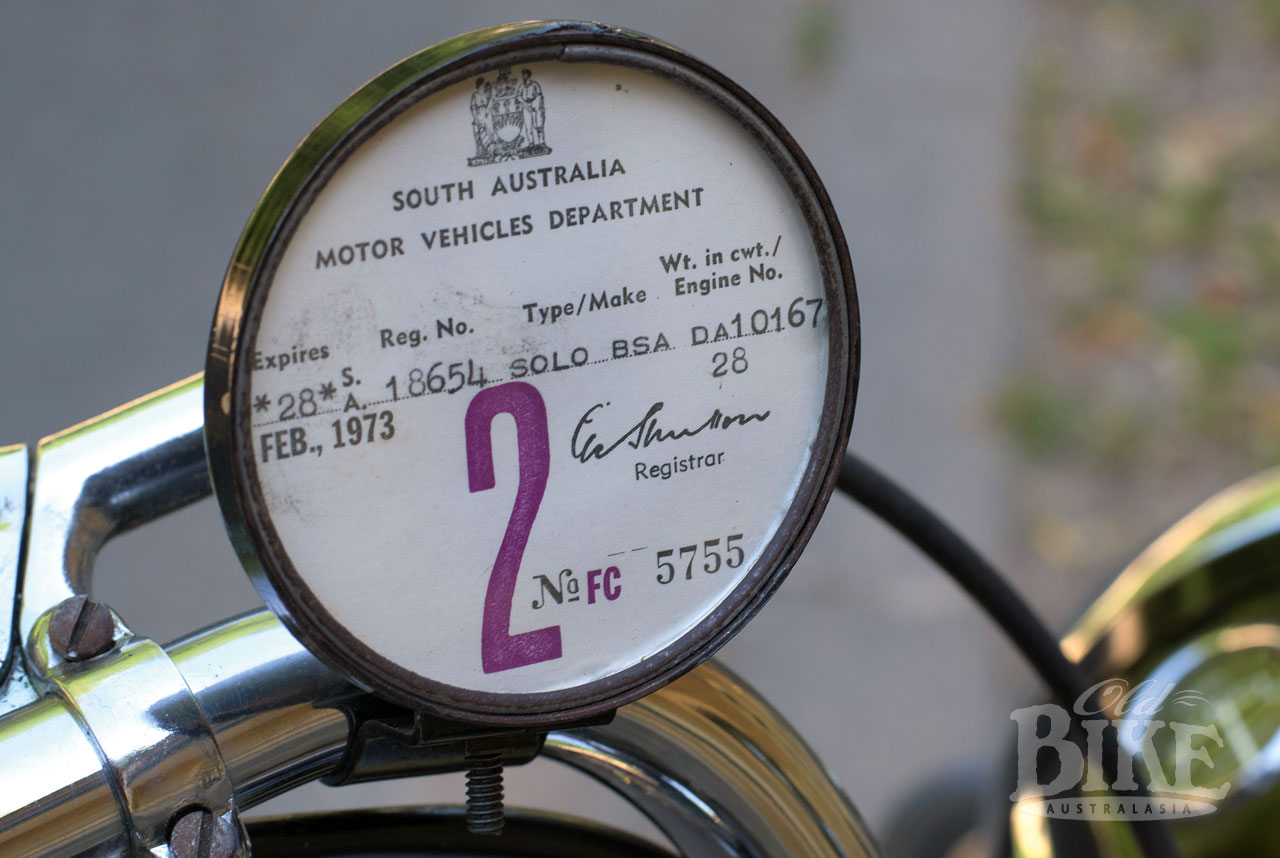
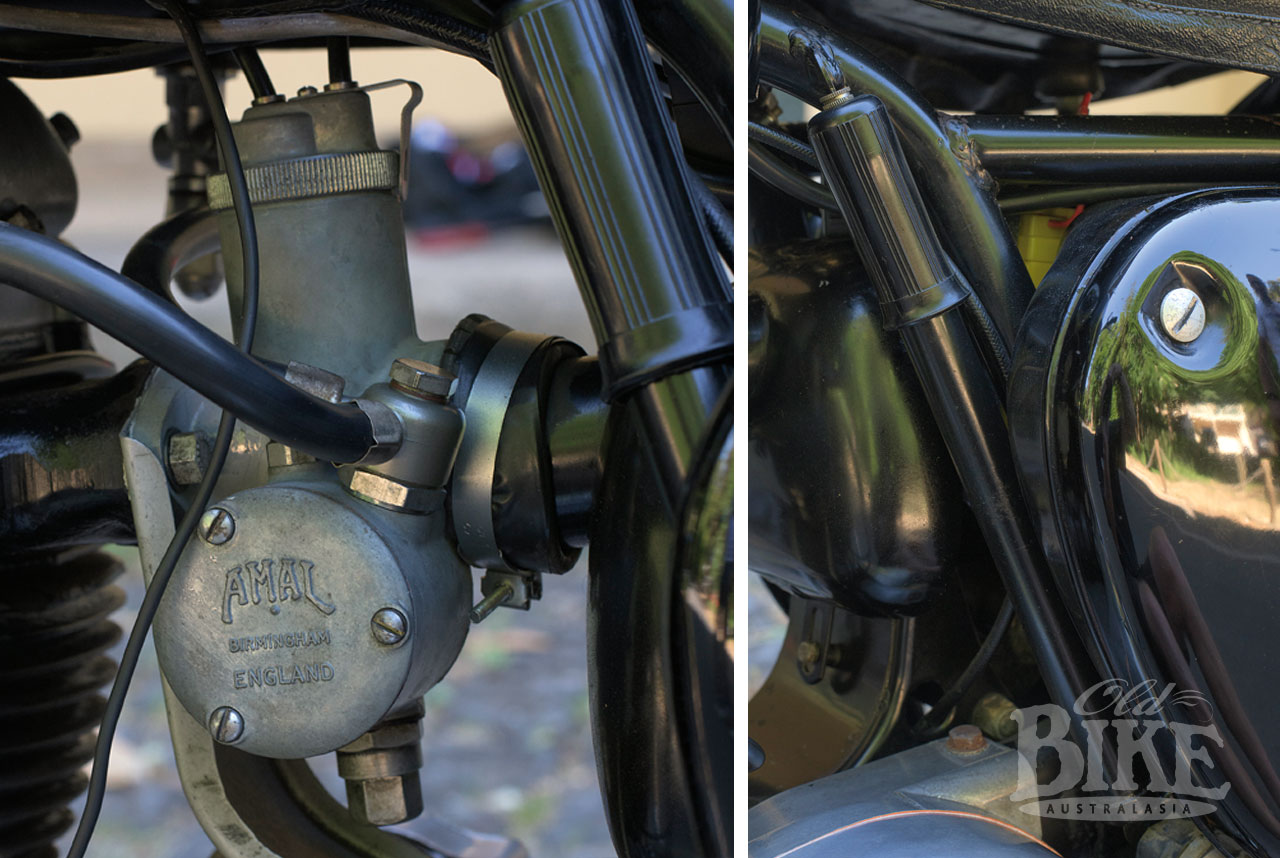
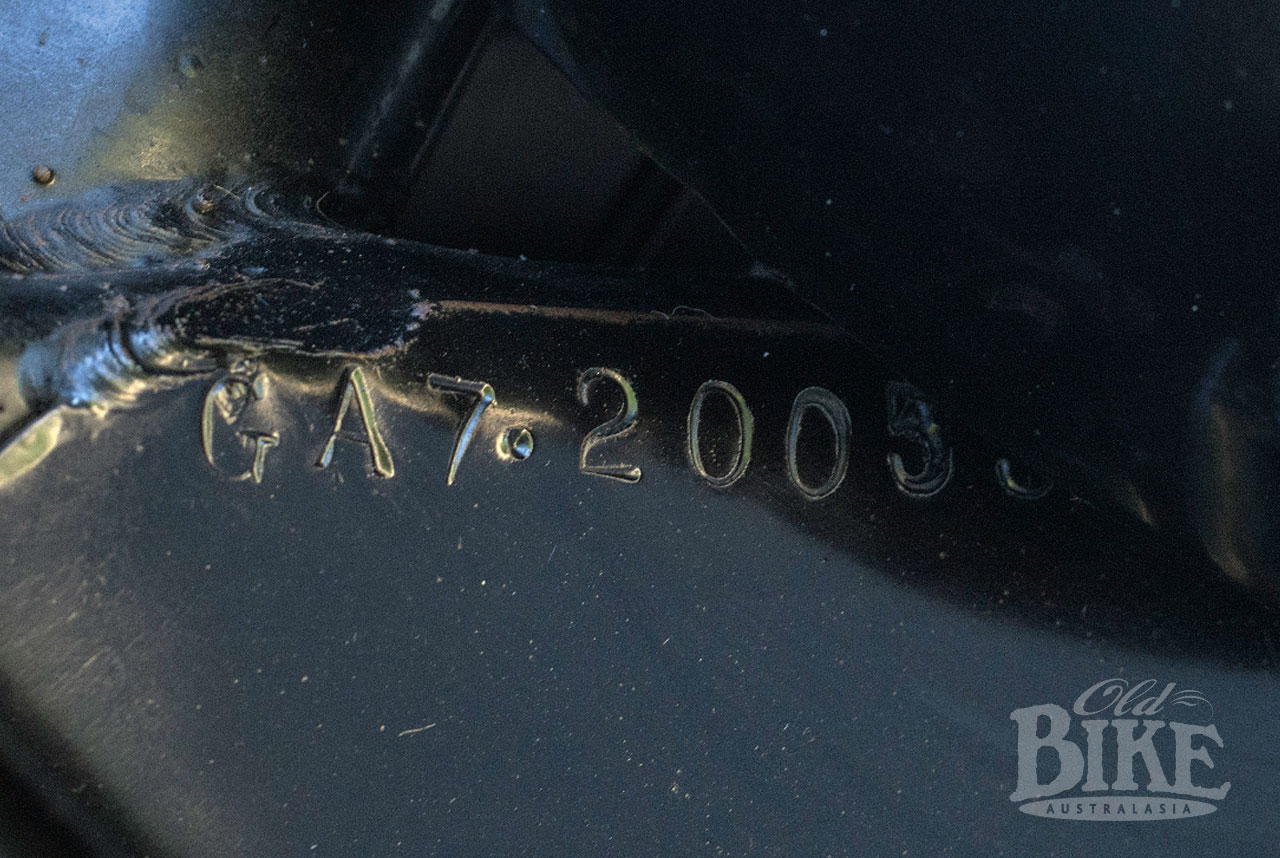
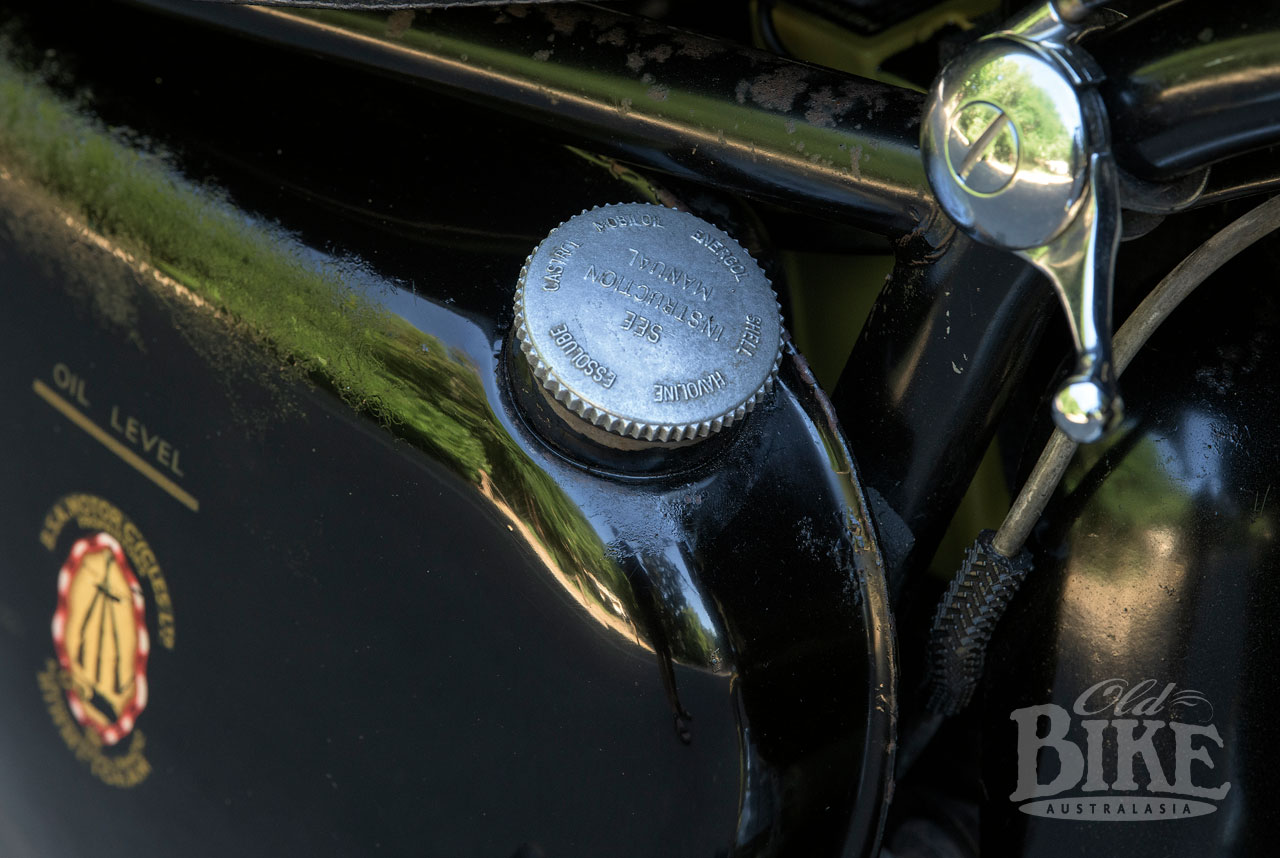
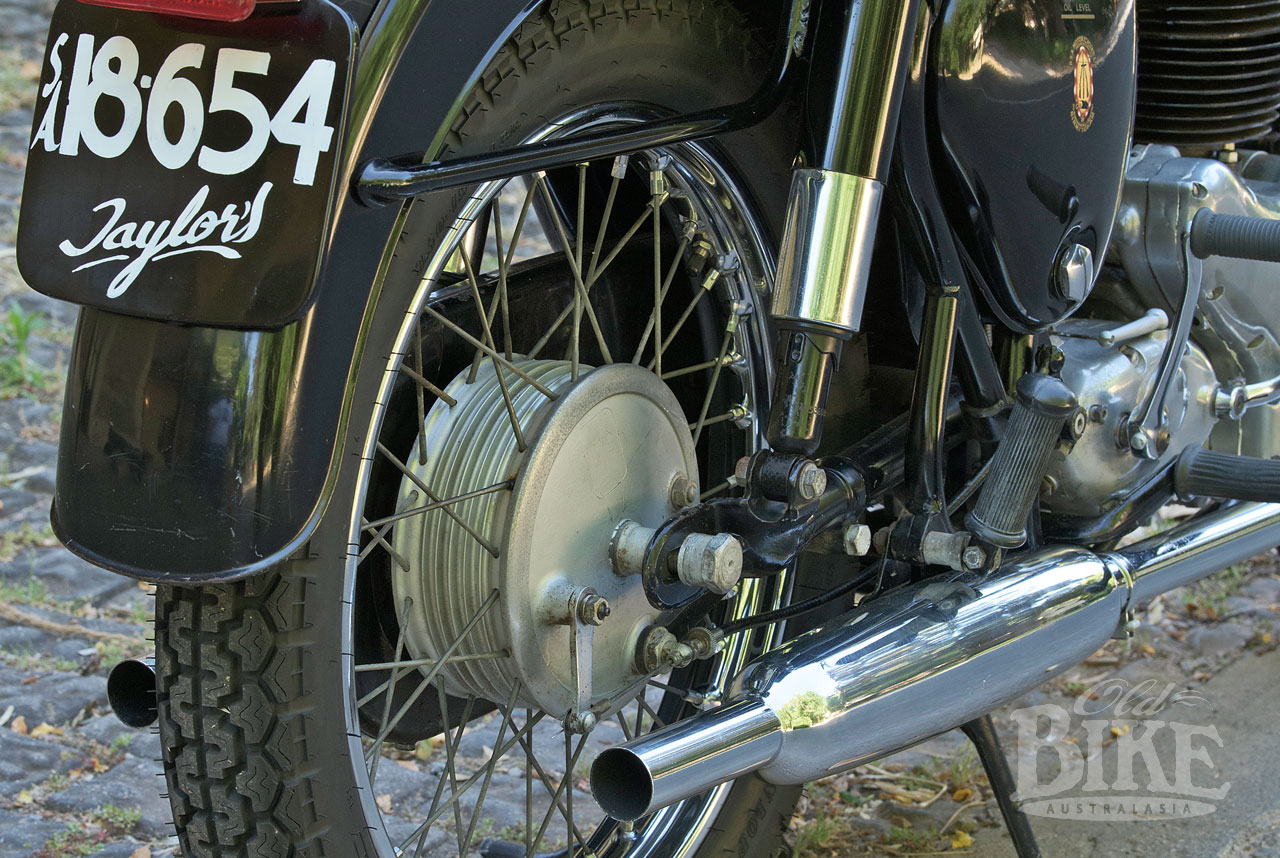
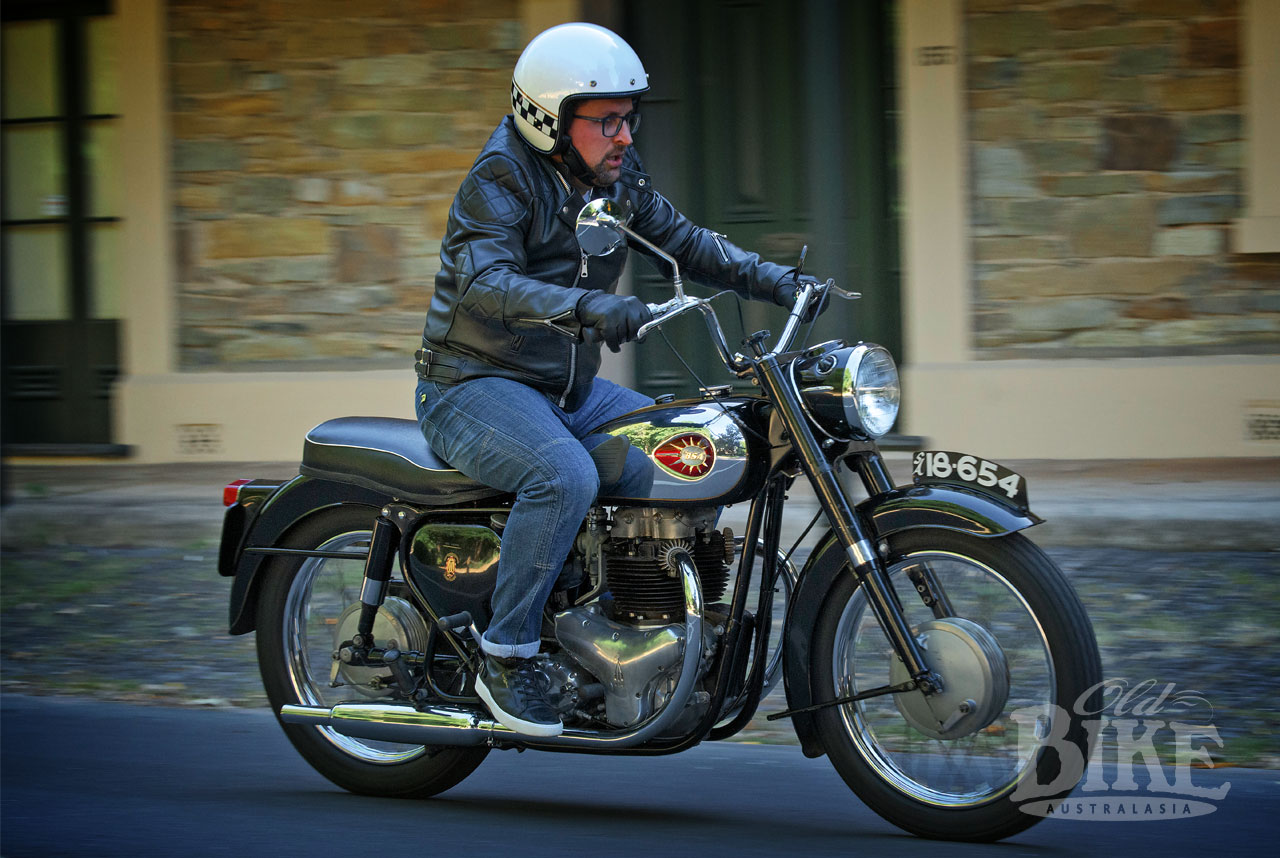
There were other issues to deal with as well, as Marco explains. “When we took the bike to Road Transport to have it inspected and registered, it failed inspection. The Motor Registry inspector believed that the frame No. GA7 20053 had been tampered with, in that the number 5 has been clearly restamped over what they believe to be a possible number 3. They issued us with another number they wanted us to stamp on the frame. I just grabbed my helmet, kicked over the bike and left the inspection depot. I then wrote a letter to the registrar of motor vehicles and asked to see an original registration document because this would prove the bike was indeed stamped with the frame number 20053. If the number had been re-stamped as the inspector claimed, then this happened at the factory as the workers stamped the frames by hand at the time, and we believe this was an operator error. I pointed out that this belief was supported by the BSA Owners Club of South Australia which has vast experience and knowledge of BSA motorcycles. I said it would be wrong to re-stamp the frame with a different or new frame number as its originality would be lost forever, and that I considered the bike to be part of Australian history. They believed my story, backed by Judith, and issued me a number plate for it, as one owner and locked in a shed 48 years.
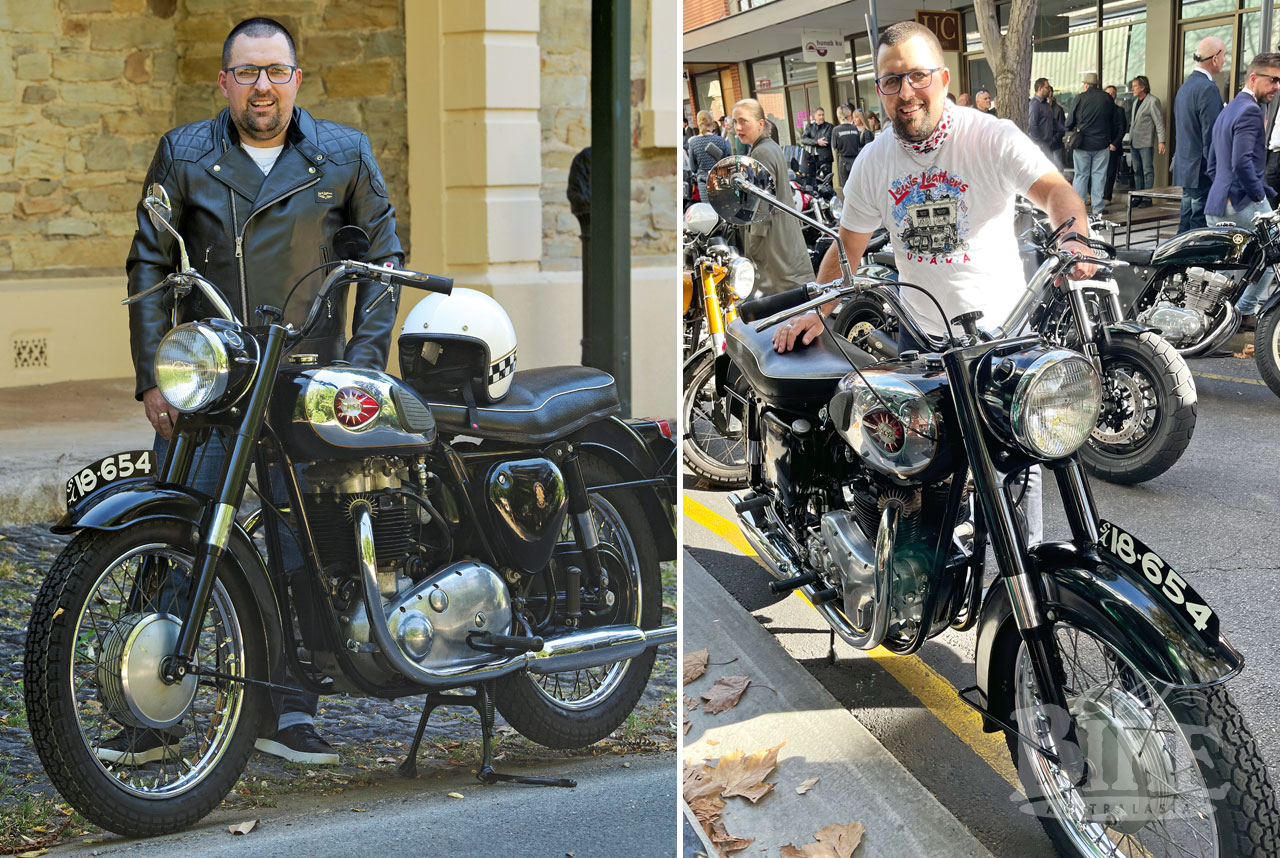
Despite the recent hassles, the BSA is now liberated from its shed and enforced slumber, and Marco is delighted that it attracts attention wherever it goes. “People stop and chat and can’t believe it is original, and Judith is over the moon that it’s back to life after so long sitting in her shed.”
Specifications: 1961 BSA A10 Golden Flash.
Engine: Parallel twin OHV. 360º crank throws.
Bore x stroke: 70mm x 84mm
Capacity: 646cc
Compression ratio: 7.5:1
Gearbox: 4 speed
Power: 34hp @ 6000rpm
Torque: 39ft lb @ 5000rpm
Carburettor: Amal Monobloc. 1 1/8”
Ignition: Magneto
Generator: E3L Dynamo
Lighting: 6 volt
Wheelbase: 1422mm
Tyres: Front: 3.25 x 19 Rear: 3.50 x 19
Seat height: 762mm
Dry weight: 414lb (188kg)
Fuel capacity: 19.3 litres


